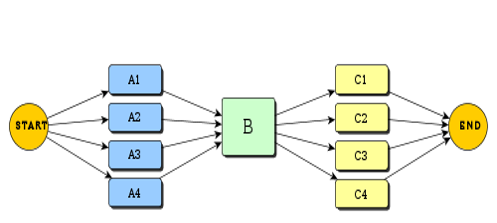|
Galois
|
|
Galois
|
Galois is a C++ library designed to simplify parallel programming. It is especially focused on computations that are difficult to parallelize efficiently, such as loops with
A typical Galois user is a C++ programmer who understands parallelism in his/her algorithm and wishes to express it using high-level constructs such as parallel loops and concurrent data structures, without having to deal with low-level parallel programming details such as threads, mutexes, barriers, condition variables, work stealing, etc.
Borrowing from Niklaus Wirth's aphorism "programs = algorithms + data structures", a "parallel-program = parallel-loop-constructs + concurrent-data-structures". Galois provides an implicitly parallel programming model, where the user replaces serial loop constructs (e.g., for and while) with parallel loop constructs, and, serial data structures with concurrent data structures.
Galois comes pre-packaged with a variety of concurrent data structure implementations, ready to use in Galois programs. This includes an extensive Graph API, concurrent Bags, Numa-Aware large arrays, concurrent lists, reducible types, as well as concurrent variants of STL data structures suitable for many use cases. In addition, users can create their own data structures, as listed out in chapter Build Your Own Galois Data Structure.
Galois implements a serial/parallel execution model implicitly. A Galois program starts execution like a serial program with a single thread in the main method. Upon Galois library initialization (explained in section Galois as a Library below) a thread pool is created, but all threads except the master thread go to sleep and the execution proceeds serially until it encounters a parallel loop construct. Upon encountering a parallel loop construct, Galois wakes up the threads in the thread pool and hands off work to them. Upon finishing the parallel loop, the threads meet at a barrier and all the threads except the main thread go back to sleep.
The number of threads in the thread pool that Galois creates is equal to the number of cores or hardware threads in case of hyper threading. A user may choose to run the program with lesser number of threads, but not more.

Galois has been implemented as a C++ library, therefore, other libraries and programs can use it. However, before using any Galois features, they must initialize galois by creating an object of type galois::SharedMemSys. Similarly, all Galois objects (objects of types from Galois library) must destruct before the galois::SharedMemSys object destructs.
The rest of this manual dives into the details of the features provided by the Galois library. We have arranged the chapters in progression of complexity, however a reader may pick individual chapters for details on a certain topic.